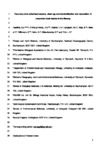Recovery of an urbanised estuary: Clean-up, de-industrialisation and restoration of redundant dock-basins in the Mersey
| dc.contributor.author | Hawkins, SJ | |
| dc.contributor.author | O'Shaughnessy, KA | |
| dc.contributor.author | Adams, LA | |
| dc.contributor.author | Langston, WJ | |
| dc.contributor.author | Bray, S | |
| dc.contributor.author | Allen, JR | |
| dc.contributor.author | Wilkinson, S | |
| dc.contributor.author | Bohn, K | |
| dc.contributor.author | Mieszkowska, N | |
| dc.contributor.author | Firth, Louise | |
| dc.date.accessioned | 2020-09-15T07:21:21Z | |
| dc.date.issued | 2020-07 | |
| dc.identifier.issn | 0025-326X | |
| dc.identifier.issn | 1879-3363 | |
| dc.identifier.other | 111150 | |
| dc.identifier.uri | http://hdl.handle.net/10026.1/16255 | |
| dc.description.abstract |
For much of the 20th century, the Mersey in North West England was one of the worst polluted estuaries in Europe. Water from a range of polluting industries plus domestic sewage was discharged into the Mersey Catchment and Estuary. Recovery came through a concerted clean-up campaign and tightening environmental regulations, partly driven by European Commission Directives, coupled with de-industrialisation from the 1970s onward. Recovery of oxygen levels in the Estuary led to the return of a productive ecosystem. This led to conservation designations, but also concerns about transfer of pollutants to higher trophic levels in fish, birds and humans. As part of urban renewal, ecosystems in disused dock basins were restored using mussel biofiltration and artificial de-stratification, facilitating commercial redevelopment and creation of a tourist destination. The degradation and recovery of the Mersey from peak-pollution in the mid-20th century is put in the context of wider environmental change and briefly compared to other systems to develop a hysteresis model of degradation and recovery, often to novel ecosystems. | |
| dc.format.extent | 111150-111150 | |
| dc.format.medium | Print-Electronic | |
| dc.language | en | |
| dc.language.iso | en | |
| dc.publisher | Elsevier BV | |
| dc.subject | Conservation | |
| dc.subject | Pollution | |
| dc.subject | Contamination | |
| dc.subject | Disused docks | |
| dc.subject | Liverpool | |
| dc.subject | Biodiversity | |
| dc.title | Recovery of an urbanised estuary: Clean-up, de-industrialisation and restoration of redundant dock-basins in the Mersey | |
| dc.type | journal-article | |
| dc.type | Journal Article | |
| plymouth.author-url | https://www.webofscience.com/api/gateway?GWVersion=2&SrcApp=PARTNER_APP&SrcAuth=LinksAMR&KeyUT=WOS:000539160000062&DestLinkType=FullRecord&DestApp=ALL_WOS&UsrCustomerID=11bb513d99f797142bcfeffcc58ea008 | |
| plymouth.volume | 156 | |
| plymouth.publication-status | Published | |
| plymouth.journal | Marine Pollution Bulletin | |
| dc.identifier.doi | 10.1016/j.marpolbul.2020.111150 | |
| plymouth.organisational-group | /Plymouth | |
| plymouth.organisational-group | /Plymouth/Faculty of Science and Engineering | |
| plymouth.organisational-group | /Plymouth/Faculty of Science and Engineering/School of Biological and Marine Sciences | |
| plymouth.organisational-group | /Plymouth/REF 2021 Researchers by UoA | |
| plymouth.organisational-group | /Plymouth/REF 2021 Researchers by UoA/UoA07 Earth Systems and Environmental Sciences | |
| plymouth.organisational-group | /Plymouth/Users by role | |
| plymouth.organisational-group | /Plymouth/Users by role/Academics | |
| dc.publisher.place | England | |
| dcterms.dateAccepted | 2020-04-02 | |
| dc.rights.embargodate | 2021-5-30 | |
| dc.identifier.eissn | 1879-3363 | |
| dc.rights.embargoperiod | Not known | |
| rioxxterms.versionofrecord | 10.1016/j.marpolbul.2020.111150 | |
| rioxxterms.licenseref.uri | http://www.rioxx.net/licenses/all-rights-reserved | |
| rioxxterms.licenseref.startdate | 2020-07 | |
| rioxxterms.type | Journal Article/Review |


